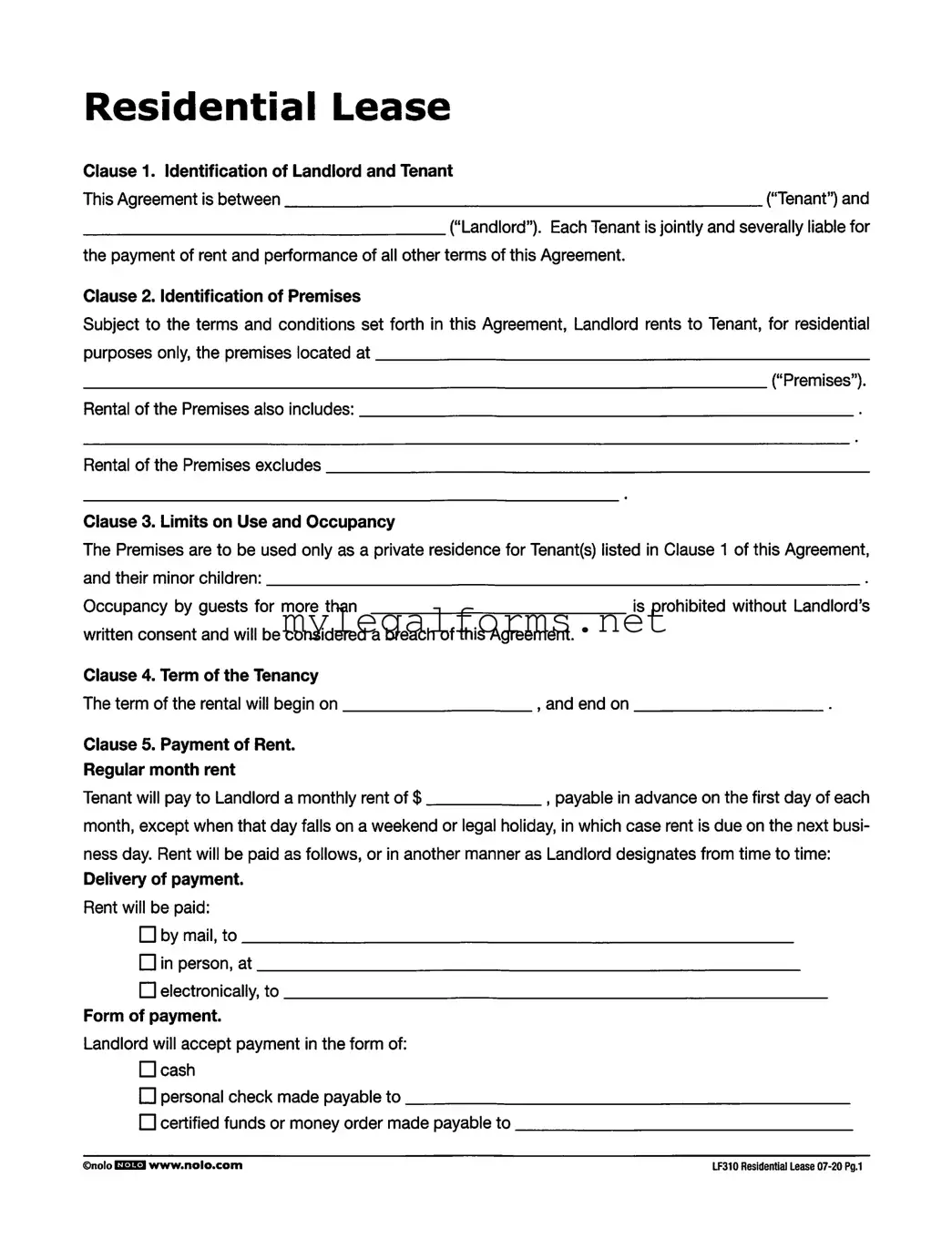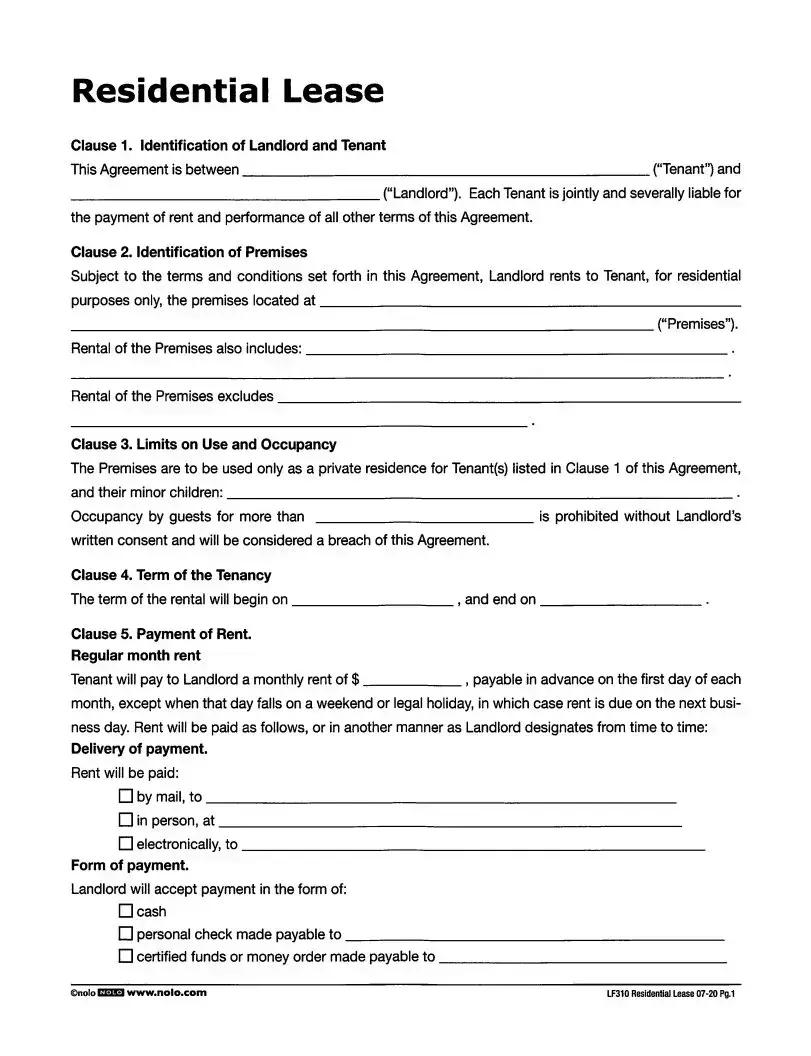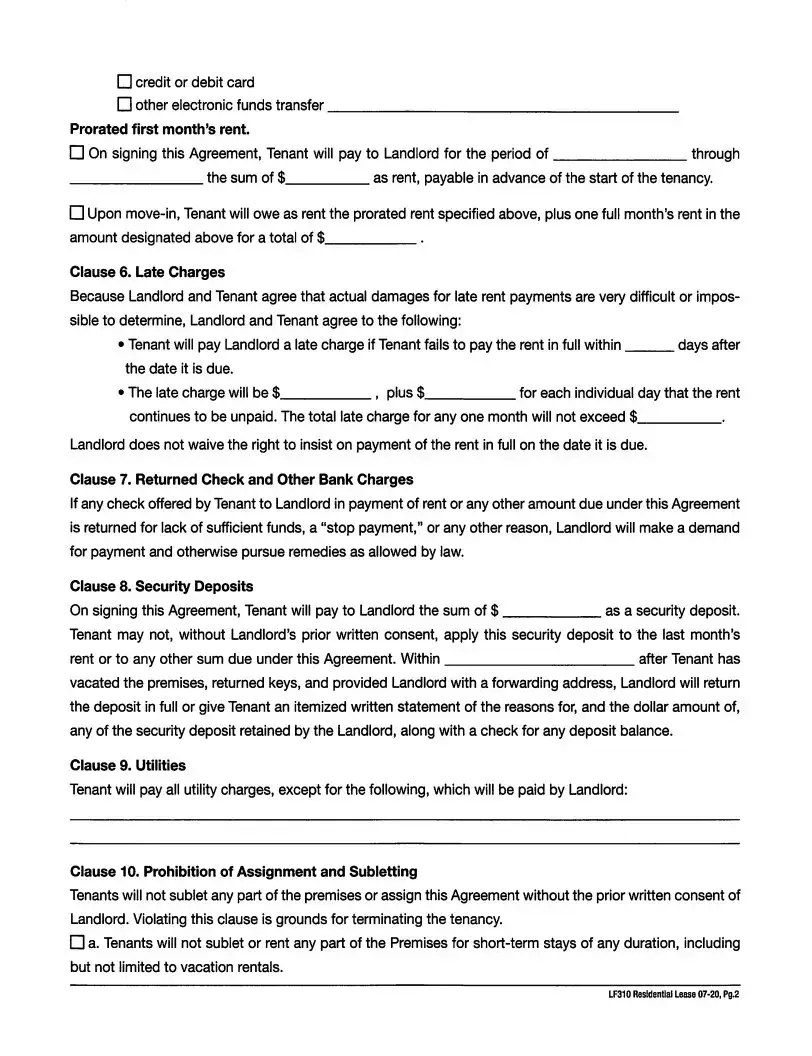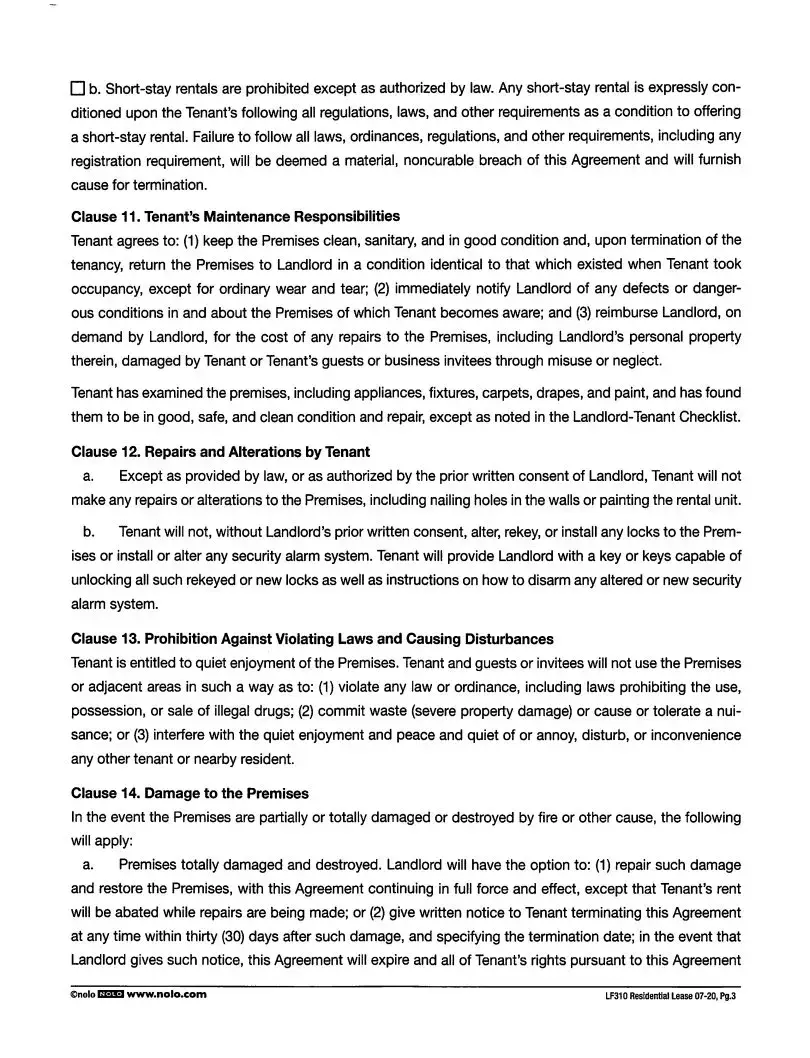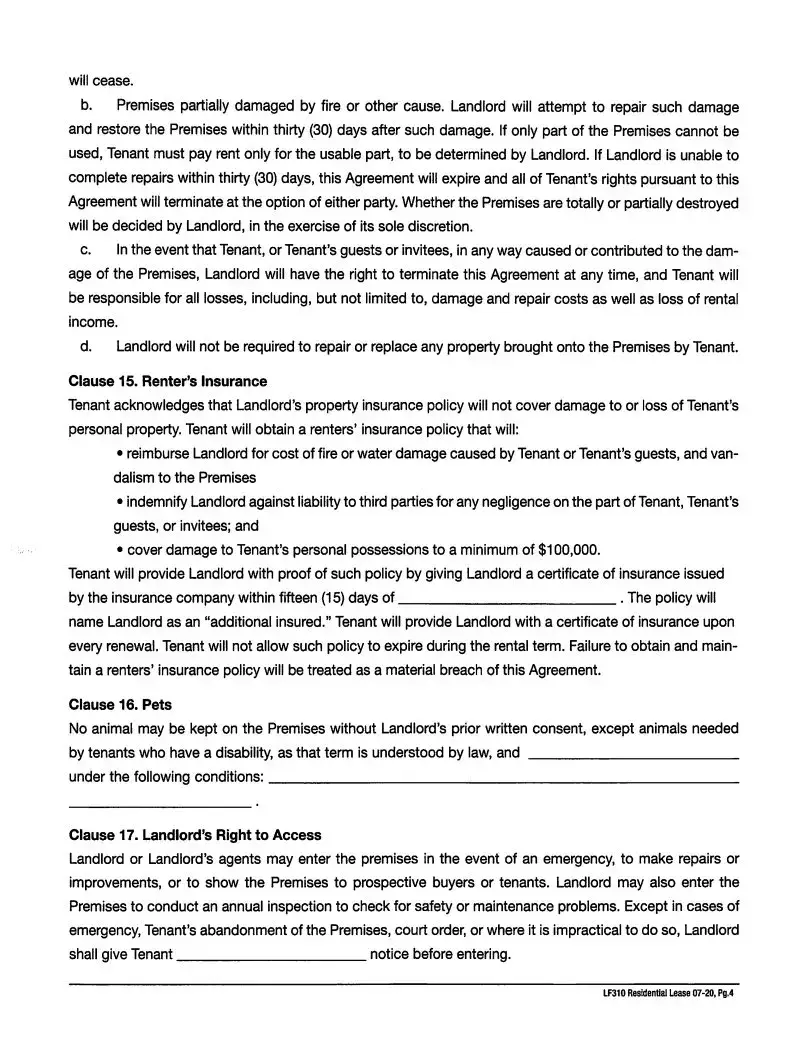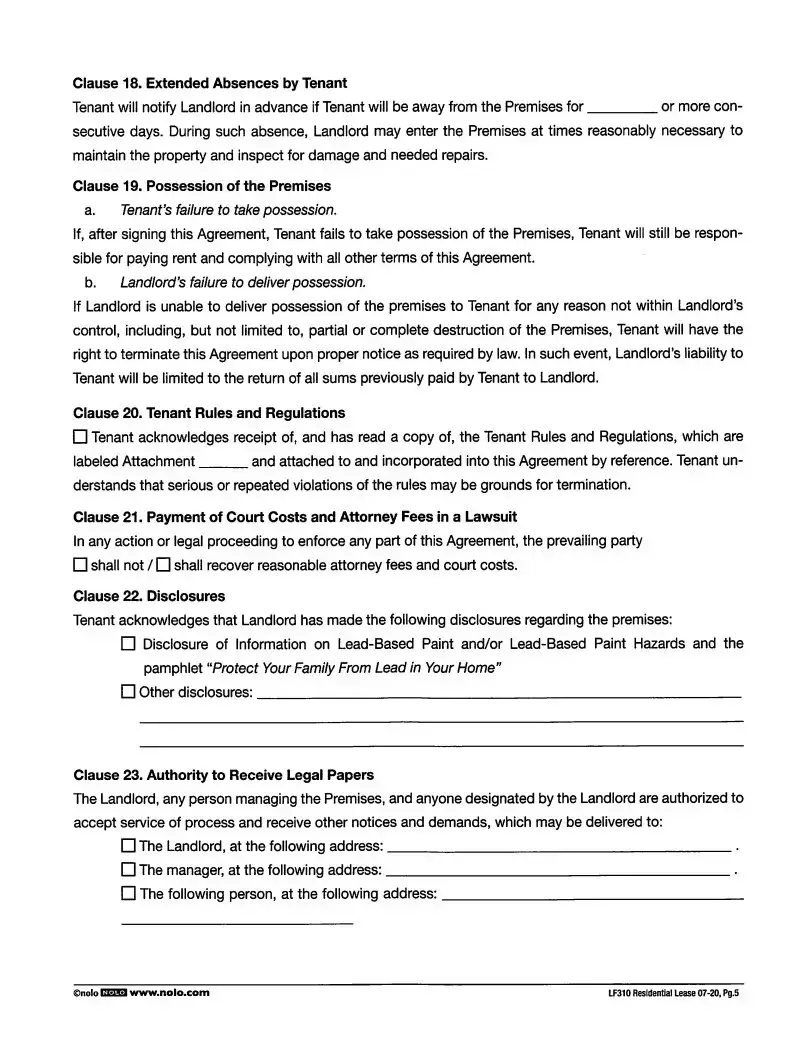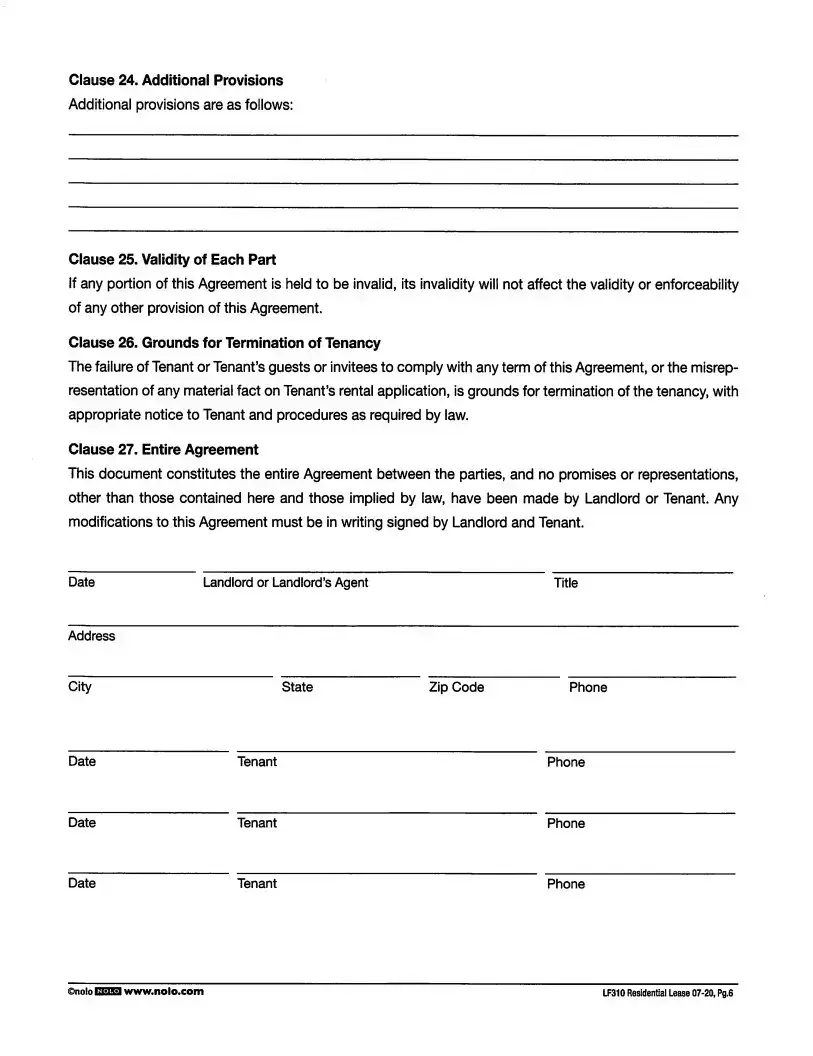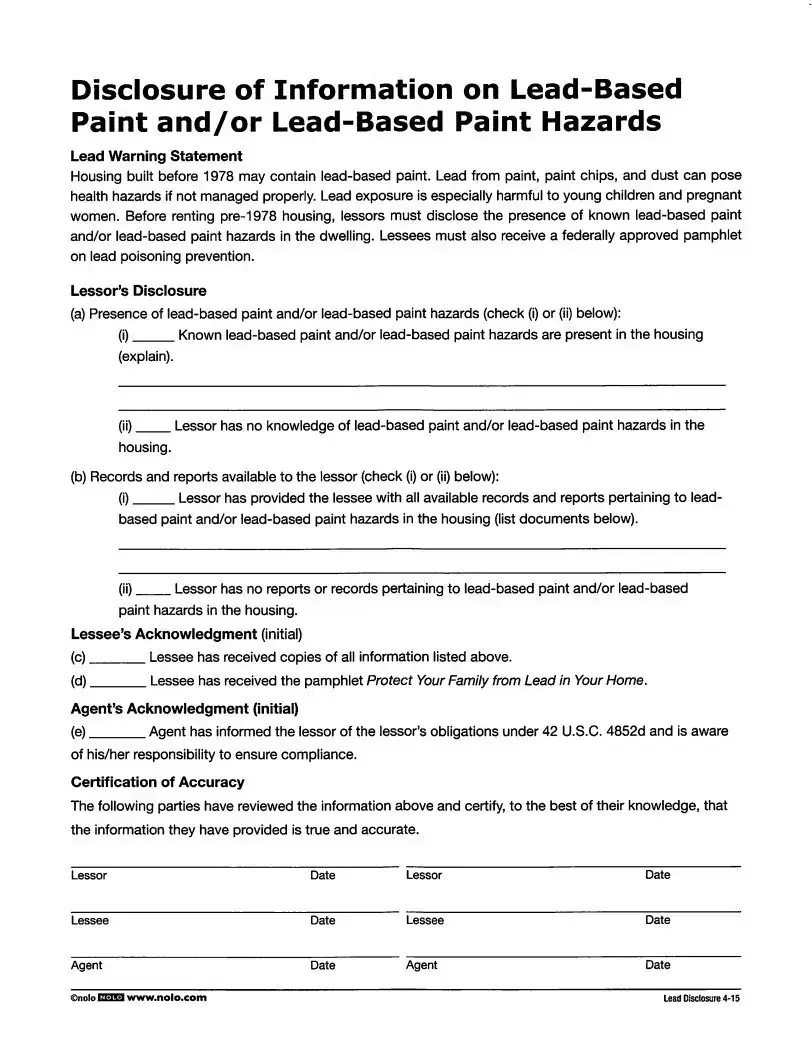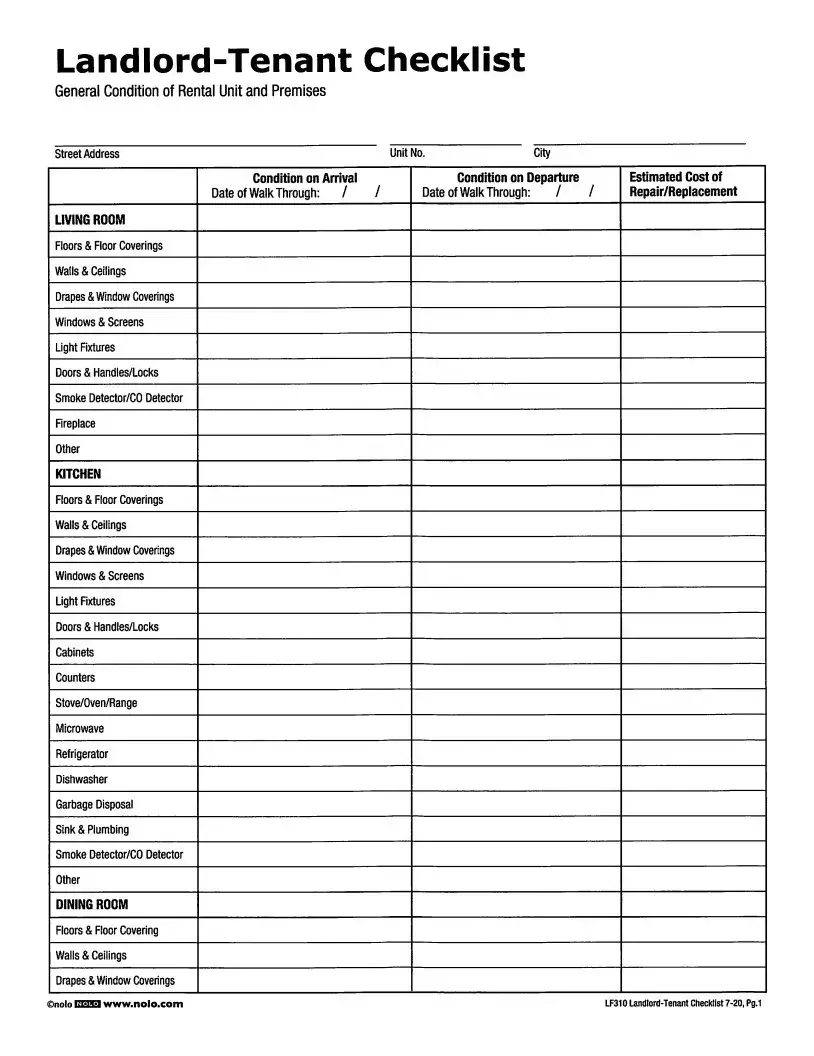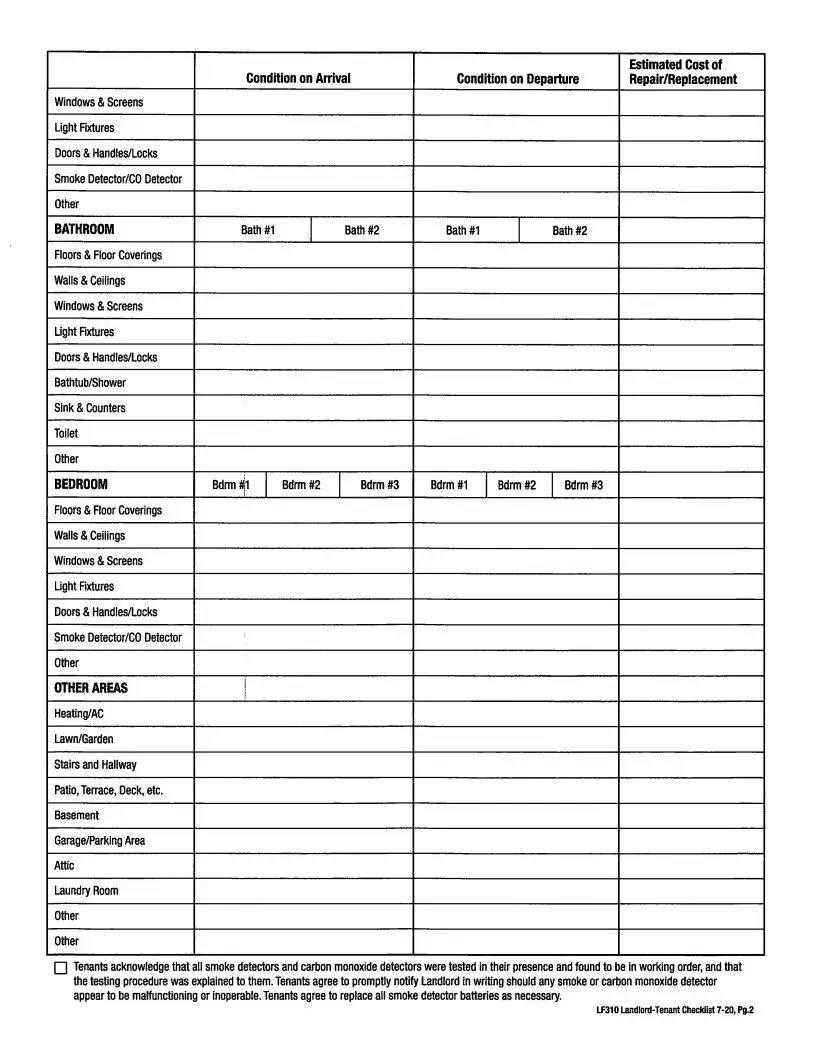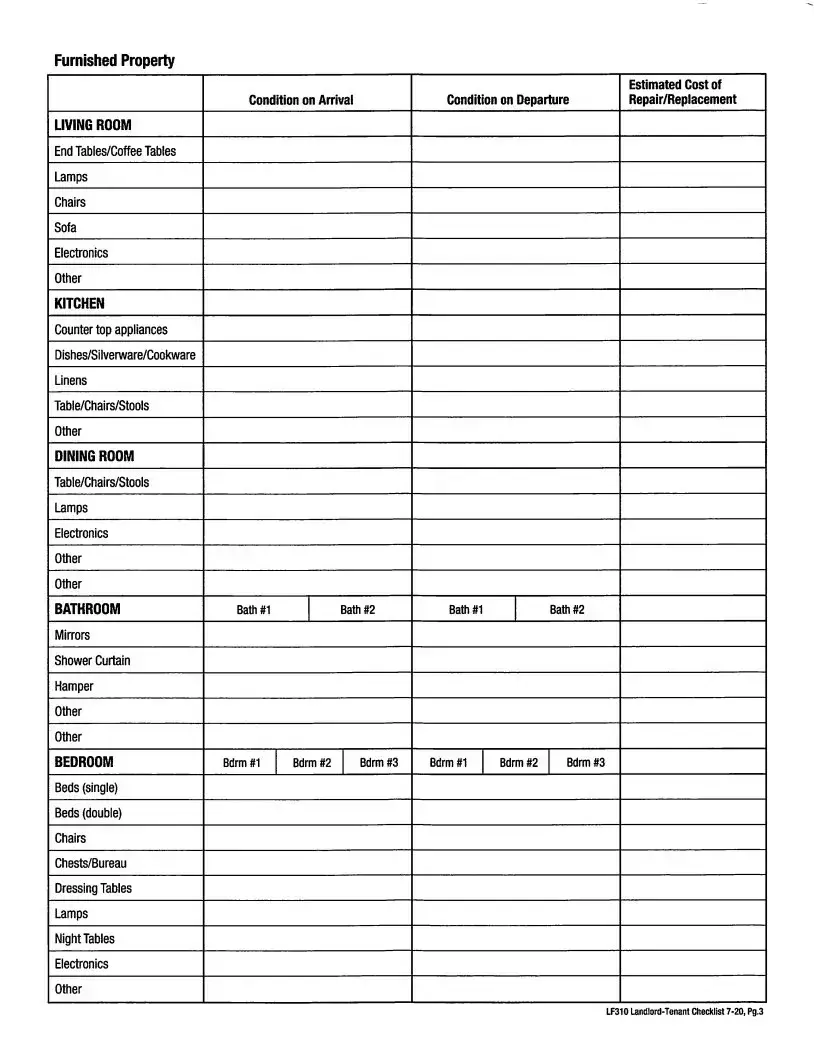The LF310 Residential Lease form serves as a crucial document for both landlords and tenants, outlining the key terms and responsibilities that govern their rental relationship. At its core, the form identifies the parties involved, specifying the landlord and tenant, and establishes the premises being rented. It emphasizes that the rental is strictly for residential purposes and details the limits on use and occupancy, ensuring that the property remains a private residence for the listed tenants and their minor children. The lease specifies the duration of the tenancy, along with clear guidelines for the payment of rent, including the monthly amount, due dates, and acceptable payment methods. Furthermore, it addresses late charges for overdue payments and outlines the consequences of returned checks. A security deposit requirement is also included, detailing how and when it can be returned after the tenant vacates the premises. Additionally, the form stipulates utility responsibilities and prohibits subletting without written consent from the landlord. Each of these elements is designed to protect the interests of both parties while fostering a clear understanding of their rights and obligations throughout the lease term.
